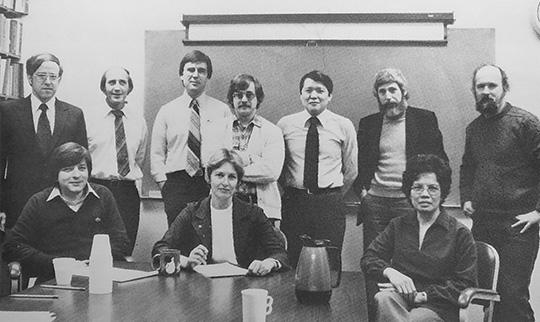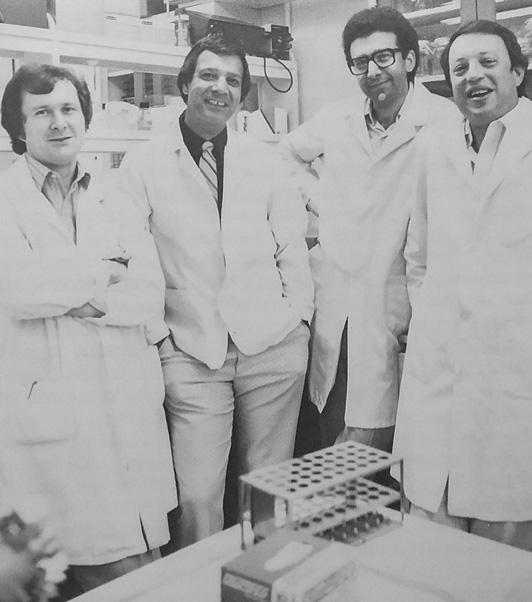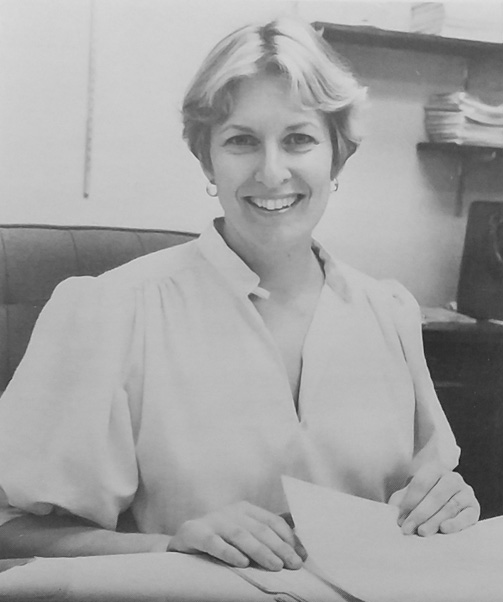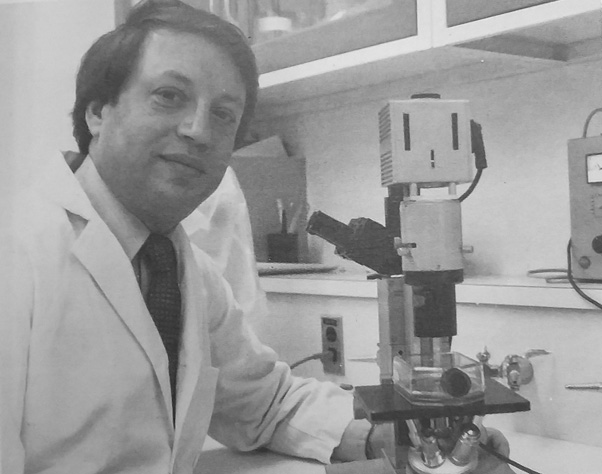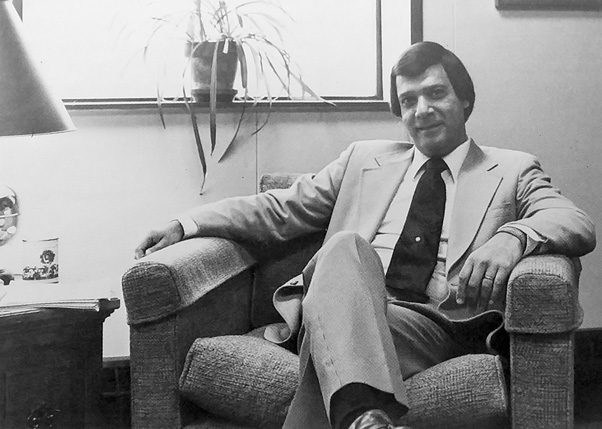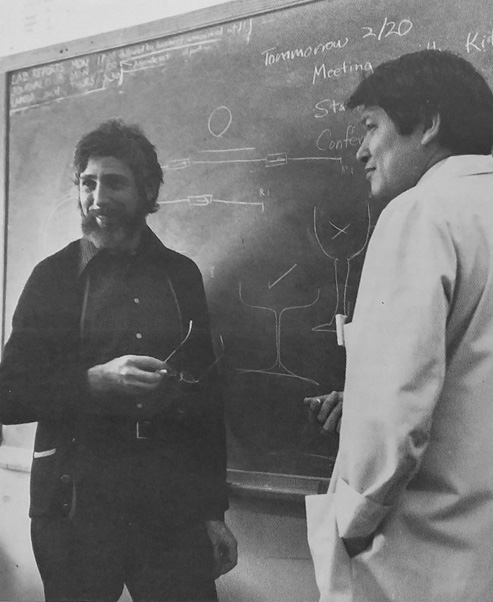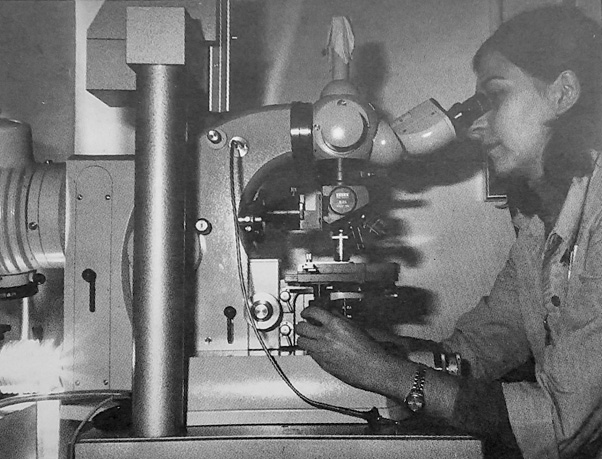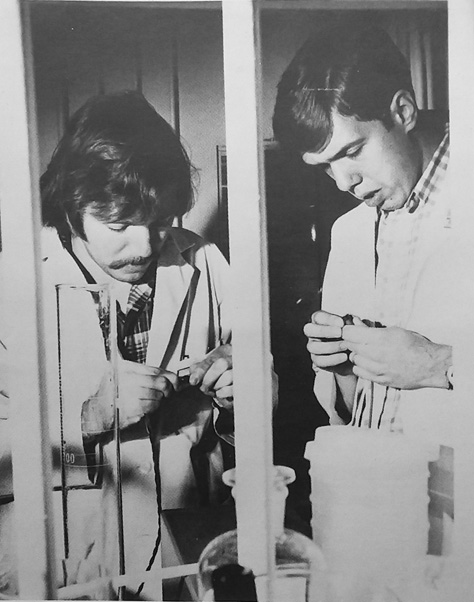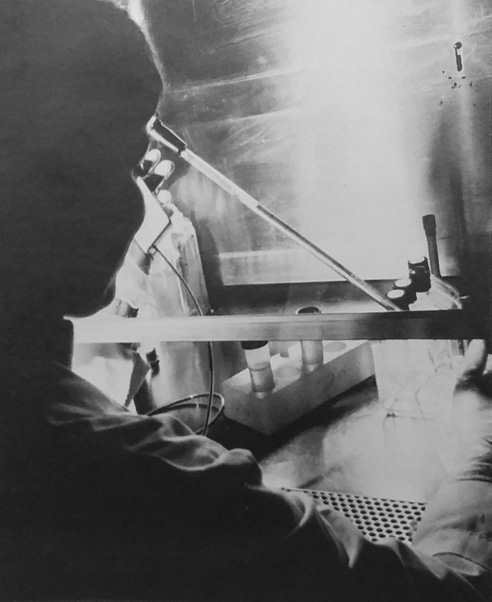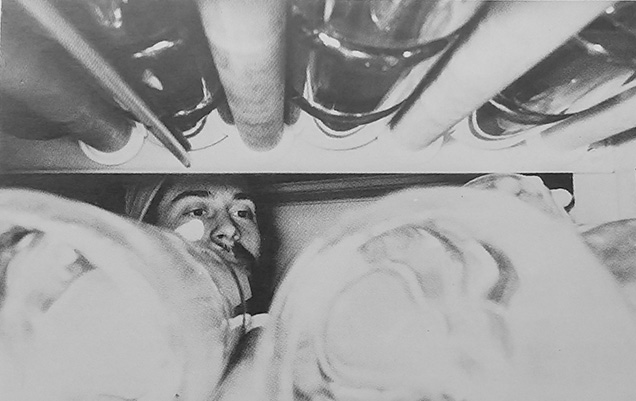Editor’s note: This is the fourth installment of a series about the history of the National Cancer Institute at Frederick and the Frederick National Laboratory for Cancer Research, and the third installment in a three-part miniseries about the original Basic Research Program.
Unsurprisingly, the new Basic Research Program at the Frederick Cancer Research Center (FCRC) took some time to gain momentum despite the preparations that had been made.
Margaret Kripke, Ph.D., head of the program’s Immunobiology of Physical and Chemical Carcinogenesis Section at the time, recalls that her first year was dedicated to setting up her new laboratory, hiring staff, moving around, and finishing projects she had started in her former laboratory at University of Utah.
“When I got there, my laboratory had a large hole in the exterior wall, and that was where they were bringing in all the equipment, so it took quite a while,” she recalled. “I was in borrowed space until then or I was in a very small space until they finished.”
But the program quickly hit its stride. Michael G. Hanna Jr., Ph.D., the program’s director, had come from Oak Ridge National Laboratory and didn’t view FCRC as just a government contract. To him, it was a budding national laboratory in all but name, and he led the program with that perspective.
The staff’s enthusiasm, vision, and expertise intertwined. They soon began making important advances, and the program became the flagship scientific enterprise that the National Cancer Institute and National Cancer Advisory Board hoped it would be.
Advances Accumulate
Kripke and her laboratory continued her groundbreaking research from earlier in her career that had uncovered ultraviolet radiation’s ability to alter the immune system’s response to tumors and pathogens. This revealed a mechanism contributing to the development of skin cancers and some infectious diseases. She was especially prolific while in Frederick, authoring or co-authoring more than 50 publications in eight years.
Several of Kripke’s projects investigated ultraviolet wavelengths’ effects on melanoma development. FCRC even custom-built a machine that allowed her to do fractionated wavelength studies in the laboratory. Her work advanced the scientific community’s understanding and underpinned the eventual development of certain sunscreens.
Isaiah “Josh” Fidler, D.V.M., Ph.D., head of the Biology of Cancer Metastasis Section, and Kripke performed a landmark cloning study in 1977. Together, the husband-and-wife duo proved, for the first time, that tumors are composed of many different types of cells instead of identical cells, which opposed the prevailing theory at the time. The scientific and medical communities were slow to accept the findings, but the study has since been hailed as a milestone in cancer research.
James Ihle, Ph.D., head scientist in a viral carcinogenesis group, and colleagues in Frederick discovered interleukin-3, a naturally occurring protein that increases the number of cells produced by bone marrow. Their findings were published in 1981. Interleukin-3 is now used to boost the immune system in cancer therapy.
Around the same time, Fidler and a postdoctoral fellow, Ian Hart, Ph.D., demonstrated that cancer cells metastasize to new organs based on the cells’ predisposition independently of blood flow. The work validated Stephen Paget’s “seed and soil” theory of cancer metastasis that had gone unproven for 90 years. (By this point, Fidler’s laboratory had separated from the program into a standalone entity, but it remained an “offshoot” and continued to work closely with program staff.)
Meanwhile, Hanna and his laboratory were investigating the Bacillus Calmette-Guérin tuberculosis vaccine as a cancer treatment. Throughout the late 1970s and early 1980s, they published several studies demonstrating that the vaccine, combined with other treatments, could shrink certain tumors, eliminate metastases, and improve survival in guinea pig models of cancer. This laid the foundation for future studies that led to the FDA’s eventual approval of the vaccine to treat carcinoma in situ bladder cancer, for which it remains a primary and highly effective therapy.
The new environment with investigator-initiated basic research also led to FCRC’s first-ever programmatic peer review. A committee of well-respected scientists evaluated the facility, resulting in adjustments and—unfortunately—the closure of two programs. For groups that were doing well, like the Basic Research Program, it was a vindication. For those that were struggling, it proved an important opportunity to regroup, reorganize, and redirect efforts to be more effective.
“Then things started to really roll,” Hanna said.
The Basic Research Program saw major accomplishments outside the laboratories, too. Its staff helped organize conferences and hosted lectures that brought respected scientists to FCRC. These events called the scientific community’s attention to the small facility, which “was not on the beaten path for much of anything in those days,” Kripke said. Combined with the early scientific discoveries, they helped put FCRC on the map.
Other actions cultivated FCRC’s budding reputation. Basic Research Program staff frequently traveled to conferences to share their research. Kripke was named a U.S. delegate to the United Nations Environment Programme’s 1977 meeting on the ozone layer due to her expertise in ultraviolet radiation. Fidler was a leading voice in the metastasis field. Hanna; FCRC scientist Nat Sternberg, Ph.D.; and other staff collaborated with the U.S. Army Medical Research Institute of Infectious Diseases, Hood College, and Frederick Community College to educate the public about local research efforts by organizing a lecture series, Science in Frederick.
“Everybody [in the program] was excited about what they were doing, and everybody was able to do a lot of research,” Kripke said. “We did enormous numbers of experiments and things that probably couldn’t be done anywhere else.”
A Good Place to Be
Like much of FCRC, the Basic Research Program enjoyed a strong sense of camaraderie in its early years. Hanna and Kripke recall it being a small, tight-knit group with a commitment to teamwork.
“Everybody had kind of different scientific backgrounds, and so it was very exciting. We learned a lot from each other,” Kripke said.
The collaborative spirit continued as the Basic Research Program grew, separated, and changed. New groups were established internally as time passed. Then, in 1979, Hanna was promoted to FCRC director, and Kripke became the new director of the program, renamed the Cancer Biology Program, shortly thereafter. Hanna’s and Fidler’s laboratories were reorganized into a separate program, the Cancer Metastasis and Treatment Laboratory, headed by Fidler. Despite the changes, the groups inside and outside the Cancer Biology Program continued to work closely. Frederick’s science was flourishing.
Kripke strived to foster strong relationships as the program’s new director. One of her first acts was to host a series of “pizza and beer sessions” for young scientists in the evenings. Program leaders would meet with these junior staff in an informal setting to hear about their scientific interests and determine ways to help them.
It was an enjoyable time to be part of the program, as evidenced by fond memories former employees have shared over the years. In a 2005 article for Cancer Biology & Therapy, Fidler wrote that those days in Frederick were “thrilling” and “rewarding” and that each “was more exciting than the preceding one.”
On Solid Ground
As the 1980s unfolded, the young scientists who had started the program decided to take the next step in their careers. Hanna transferred to the Litton Institute of Applied Biotechnology, a new research facility in Shady Grove, Maryland, in 1983. That year, Kripke and Fidler moved to Houston, where they became chairs of departments at MD Anderson Cancer Center. Ihle left FCRC in 1984 to join St. Jude Children’s Research Hospital, where he continued his work on interleukins.
The old guard’s departure helped mark a new period in the program, but the laboratories’ tradition of success would continue. Where the Weinhouse Committee had identified lagging independent research at the facility a decade earlier, there was now a thriving collective of laboratories and groups leading studies into cancer and other diseases.
It was the germ of the facility’s journey to becoming the National Cancer Institute at Frederick and the Frederick National Laboratory for Cancer Research, the scientific heavyweights that they are today.
“We ploughed those acres,” Hanna said. “It started out as a national laboratory—‘disguised’—and it ended up as a national laboratory for real.”
In memory of Dr. Isaiah Fidler, 1936–2020.


